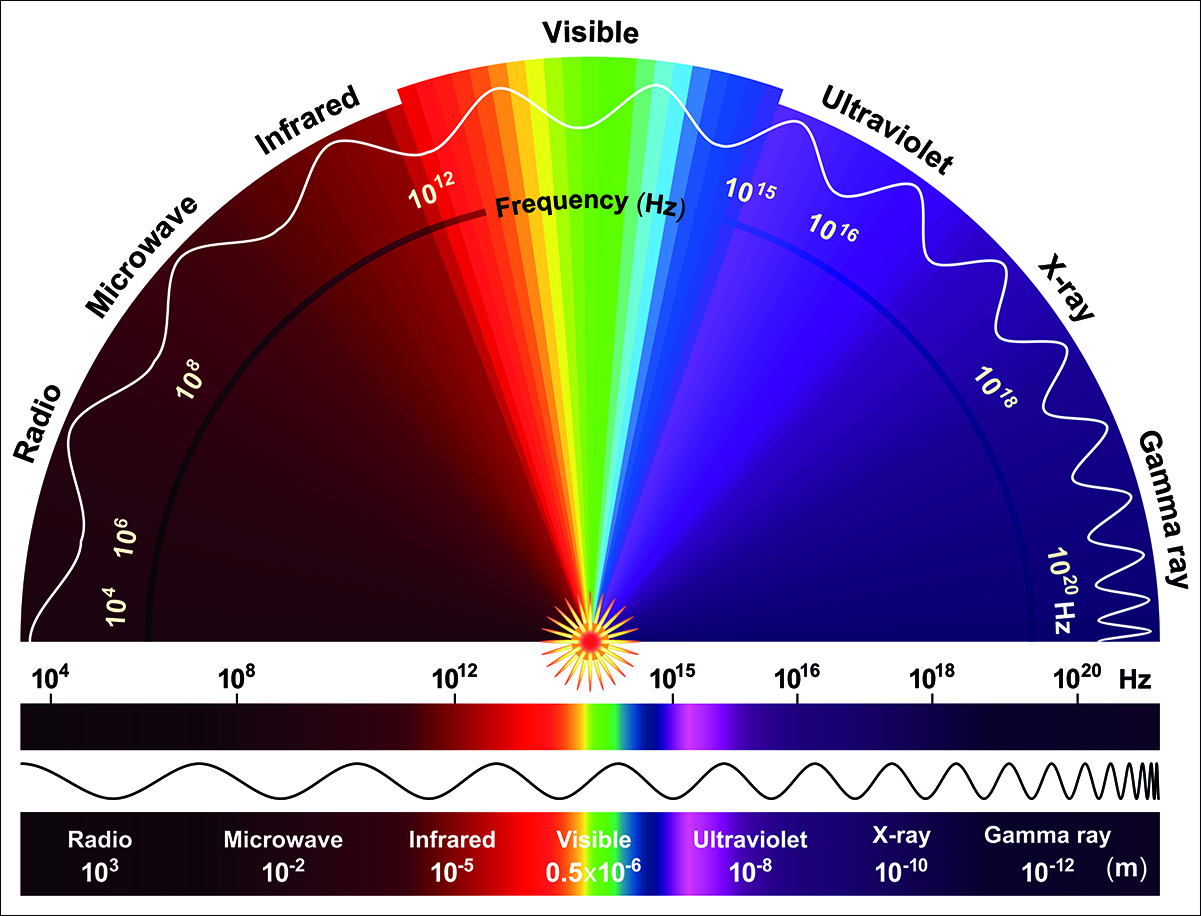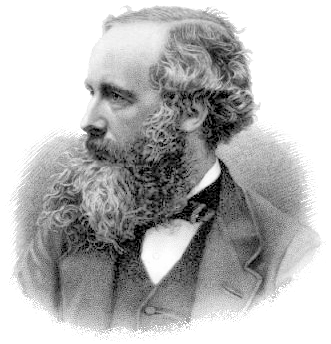Key Concepts
The interaction among all electrically charged objects, objects with magnetic moments, and the electromagnetic field. The electromagnetic interaction is one of the four fundamental interactions of the universe. This interaction encompasses all physical phenomena related to electricity, magnetism, electromagnetic fields, light, and atoms (Fig. 1). As such, electromagnetism forms the fundamental basis for a wide variety of sciences, including solid-state physics, optics, chemistry, and molecular biology. All electromagnetic effects arise from the interaction of electrically charged particles, particles with an intrinsic magnetic moment, and the electromagnetic field. See also: Chemistry; Electric charge; Electric field; Electricity; Electromagnetic radiation; Fundamental interactions; Light; Magnetism; Molecular biology; Optics; Photon; Solid-state physics; Standard model

Fundamental electromagnetic elements
Electric charge
Electric charge is an innate property of all charged fundamental particles and can be either positive or negative. The charged particles that are most common in the universe are negatively charged electrons and positively charged protons. A charged object, such as a statically charged balloon, has an excess or lack of electrons. When charged particles are moving, they are known as electric currents. An example of an electric current is the flow of electrons along an electrical wire. See also: Electric current; Electron; Elementary particle; Proton; Universe
Intrinsic magnetic moment
In contrast to electric charge, there is no evidence that magnetic charge exists. However, some fundamental particles do have an innate magnetic property known as the intrinsic magnetic dipole moment. A particle with a magnetic moment, such as an electron, can roughly be thought of as a very small bar magnet. A permanent magnet is a collection of particles with aligned magnetic moments. See also: Magnet; Magnetic monopoles; Magnetism; Magneton; Momentum
Electromagnetic field
The electromagnetic field is a physical field created by charged particles and particles with a magnetic moment. The field itself does not carry electric charge or magnetic moment, but it does carry energy and momentum. The field can transfer its energy and momentum to charged particles and particles with magnetic moment. This field can also occasionally create or destroy particles. The electromagnetic field contains two components: an electric field and a magnetic field. Both are inseparable components of one unified field. See also: Energy
The electromagnetic field can take on five general forms:
- Electrostatic fields consist of a static electric field and a negligible magnetic field. An example is the field surrounding a stationary, statically charged balloon.
- Magnetostatic fields consist of a static magnetic field and a negligible electric field. An example is the field surrounding a stationary magnet.
- Electroquasistatic fields consist of a slowly changing electric field and a slowly changing magnetic field, with the electric field dominating. An example is the field inside a simple electric circuit. See also: Circuit (electricity); Circuit (electronics)
- Magnetoquasistatic fields consist of a slowly changing electric field and a slowly changing magnetic field, with the magnetic field dominating. An example is the field inside an electromechanical generator.
- Electromagnetic waves consist of rapidly changing electric and magnetic fields that travel as waves. Electromagnetic waves are emitted any time an electrically charged object or magnet accelerates. These waves are generally referred to as light. All frequencies of light consist of electromagnetic waves, from radio waves on the low-frequency (long wavelengths) end of the electromagnetic spectrum to gamma rays on the high-frequency (short wavelengths) end (Fig. 2).

Physical laws of electromagnetism
Behavior of the electromagnetic field
The manner in which electromagnetic fields are created and behave are summarized by four laws known collectively as Maxwell’s equations:
- An electrically charged particle creates an electric field. This is the operating principle behind simple electric circuits, capacitors, and spark plugs. This principle is known as Gauss’s law.
- Magnetically charged particles do not exist and therefore certain types of magnetic fields do not exist. This principle is known as Gauss’s law for magnetism.
- A changing magnetic field creates an electric field. This law is the operating principle behind electric generators, microphones, and transformers. This principle is known as Faraday’s law of induction.
- A moving or spinning electric charge creates a magnetic field. This is the operating principle behind electromagnets and permanent magnets. This principle is known as Ampère’s law. Also, a changing electric field creates a magnetic field. When both principles are combined, it is known as the Ampère-Maxwell law.
As a description of the fields, Maxwell’s equations are complete and self-consistent. Additionally, Maxwell’s equations implicitly contain other physical laws, including conservation of charge, conservation of energy, conservation of momentum, conservation of angular momentum, and the electromagnetic wave equation. Furthermore, the electromagnetic wave equation implicitly contains the basic laws of optics. These laws are the operating principles behind optical devices such as lenses, mirrors, and prisms. See also: Ampère's law; Conservation laws (physics); Conservation of energy; Conservation of momentum; Faraday's law of induction; Lens (optics); Maxwell's equations; Mirror optics
The electromagnetic force
While Maxwell’s equations describe how electromagnetic fields are generated and behave, the Lorentz force law describes how the fields interact with charged particles. This law states that an electric field exerts a forward or backward force on a charged particle and a magnetic field exerts a sideways force on a moving charged particle. Charged objects, electric currents, and magnets exert forces on each other through the electromagnetic field according to Maxwell’s equations and the Lorentz force law. This is the operating principle behind chemical bonds, loudspeakers, and electric motors. See also: Chemical bonding; Coulomb's law
Quantum properties
Electric charge, magnetic moment, and the electromagnetic field each come as a collection of discrete, indivisible, quantum packets. The quantum of the electromagnetic field is the photon. The quantum of electric charge is the charge held by a fundamental particle, such as an electron or positron. The quantum of intrinsic magnetic moment is the moment carried by a charged fundamental particle with quantum spin, such as an electron or positron. The most accurate description of electromagnetism is the quantum version of all of the physical laws mentioned above, which are known collectively as quantum electrodynamics (QED). QED unifies the quantum laws of electromagnetism and the special theory of relativity. See also: Photon; Quantum electrodynamics; Quantum field theory; Quantum mechanics; Relativity; Spin (quantum mechanics)
Material effects
In general, charged particles can be either free or bound inside molecules. Materials that act strongly like collections of free charged particles are known as conductors. Important conductors include metals, doped semiconductors, water, and plasma. Materials that act strongly like collections of bound charged particles are known as insulators or dielectrics. Important insulators include plastic, glass, oil, and air. See also: Air; Conductor (electricity); Glass; Plasma (physics); Polymer; Semiconductor
Similarly, electric currents can be either free or bound inside molecules. Also, intrinsic magnetic moments can be modeled as bound currents because they arise from the quantum spin of charged particles. Materials that act strongly like collections of free currents are known as conductors, as stated previously. Materials that act strongly like collections of bound currents are known as (ferro)magnetic materials. Most magnetic materials are also conductors. Important magnetic materials include iron, steel, and nickel. See also: Ferromagnetism; Iron; Molecule; Nickel; Steel
History and applications
As a broad field of study, electromagnetism has been developed by a large variety of contributors. Ancient Greeks pursued basic studies of electrostatics and magnetostatics using amber and lodestones. In the eighteenth and early nineteenth centuries, scientists such as Benjamin Franklin, Charles Augustin de Coulomb, Jean-Baptiste Biot, and Félix Savart determined the nature of electric charge, electric currents, electrostatic fields, and magnetostatic fields. From the 1820s to the 1850s, Michael Faraday discovered the law of induction, the electromagnetic field, and other principles. He also invented the electric motor and the electric generator, thereby opening the door for the widespread application of electromagnetism. See also: Generator; Motor
In 1861, James Clerk Maxwell (Fig. 3) organized the laws of electromagnetism into one complete set. In doing so, he predicted the existence of electromagnetic waves theoretically. Heinrich Hertz performed experiments with radio waves in the 1880s that confirmed Maxwell’s prediction. Hertz’s findings led to the theoretical unification of electromagnetism and optics. Near the end of the nineteenth century, engineers such as Thomas Edison and Nikola Tesla transformed society with a flood of electromagnetic inventions. Their teams installed electric power plants and power grids in major cities at a frantic pace. By the dawn of the twentieth century, electric appliances and devices were beginning to pervade every facet of modern society. See also: Computer; Electric power generation; Electronics

Throughout the twentieth century, various scientists such as Albert Einstein, Werner Heisenberg, and Paul Dirac established the quantum nature of electromagnetism. Currently, the most accurate theory of electromagnetism is quantum electrodynamics (QED), which is an integral part of the standard model of particle physics. In the second half of the twentieth century, the detailed understanding of the quantum nature of electromagnetism led to semiconductor devices and the birth of the Digital Age. Unsolved problems in electromagnetism include the existence of magnetic charge and the theoretical unification of electromagnetism with the strong nuclear interaction, as well as with gravity. Electromagnetism and the weak nuclear force were unified into the so-called electroweak interaction in the 1970s. See also: Electroweak interaction; Grand unification theories; Gravity; Quantum electrodynamics; Strong nuclear interactions; Weak nuclear interactions





